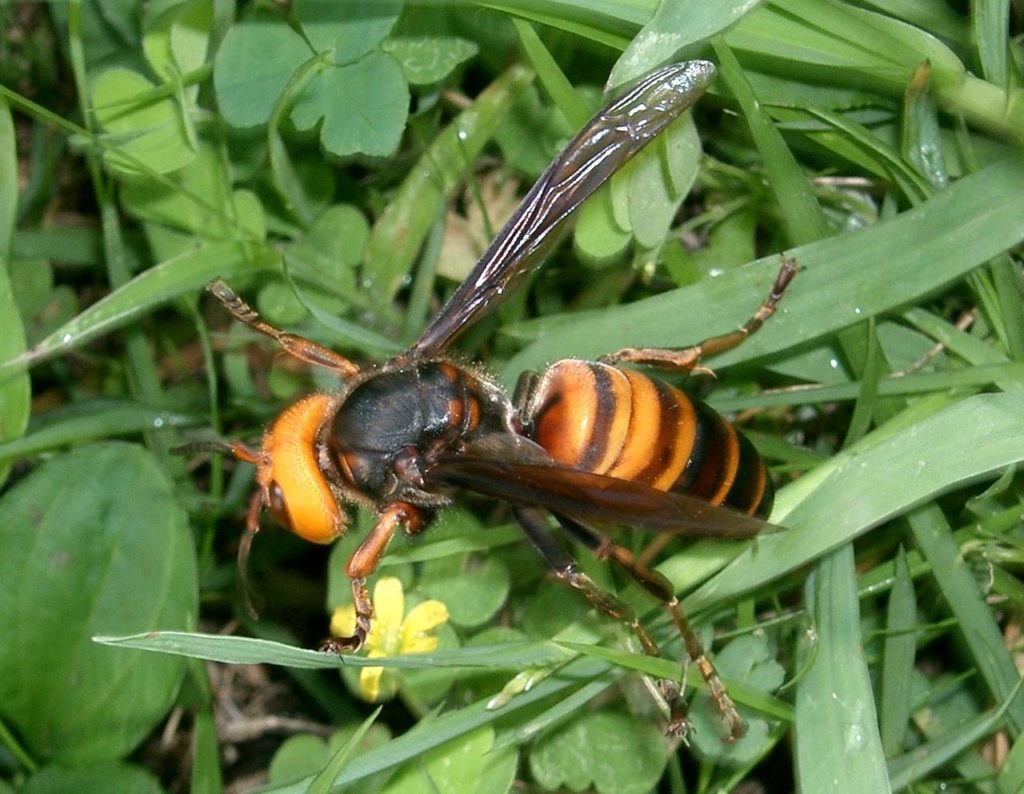Have you heard or seen the term “murder hornet” recently? Of course you have. You cannot get online or turn on a television without the phrase practically screamed at your face. Poorly-worded media reports have generated a large amount of viral and nonsensical hooplah online, and I am here to help set the record straight and hopefully put your minds at ease. Well… put your minds at ease about these hornets; I can’t help with everything else!

The “murder hornets” as they’re now unfortunately dubbed, are generally known as Asian Giant Hornets (Vespa mandarinia). This species is found throughout Asia, as their common name suggests. With queens reaching a little over 2 inches in length, they are considered the largest hornet species in the world. As recent media reports have stated, some of these giant wasps were discovered in the Northwest. However, the chances of you running into one are basically zero. To sum up a recent statement by Dr. Doug Yanega, Entomologist from the University of California: [A colony was found and destroyed on Vancouver Island in September of 2019 (1). An additional wasp was found dead on the US side of the border near Nanaimo, VI in November of that same year (2).] Those are the last confirmed sightings, and there has been no confirmed activity in 2020 (3). So good news, you do not need to run out and get a suit of armor to match your facemasks!
The Washington Department of Agriculture and other authorities are merely asking people to keep an eye out (4). There is a small chance that queens escaped from the destroyed nest and established new colonies nearby. Spring is their most active time of year, so if they were going to show up, this would be the time. IF there are other nests, they likely would be within a 50-mile radius of the original colony found on Vancouver Island (3, 4). That means if you live in Texas, no… you have not seen an accused serial-killing insect flying in your backyard.
The largest concerns I have heard from the general public are that AGH’s (that’s what we are going to refer to Asian Giant Hornets as from now on) are known to kill honey bee colonies and that their sting is deadly. Let’s start with the honeybee statement. Like other social wasps, AGH’s hunt other insects to feed their young, aka larvae. This species is known to target honeybee colonies to accomplish this goal, though they do not prey on them exclusively. AGH’s also steal honey from beehives on occasion as a food source, though the bees themselves are considered the main course. Perhaps they just need something sweet after all that murderin’.

Now, let’s talk about that stingy sting stinger. As mentioned in every viral article, the AGH’s have a large venom load and a large stinger, because they are large insects. Though the numbers vary, it is estimated an average of 50 people die in Asia yearly from Asian Giant Hornet stings (5, 6). Though I could only find an early study from the ’80s, it has been repeatedly stated that the average number of stings for the deaths mentioned above from AGH’s is nearly 60 per person (7). It is also important to note that in the United States, we lose an average of 62 people a year from insect stings, most of which are honeybees (8).
The real concerns that have been quickly glossed over by the media are more involved with the ecological impact these wasps could have on local habitats. Since these wasps are not from North America, their introduction would consider them an invasive species. As we’ve seen from other invasive insects, such as the emerald ash borer (Agrilus planipennis) and spotted lanternflies (Lycorma delicatula), these unwelcome guests can cause a lot of damage to local ecosystems and crops. If Asian Giant Hornets become established, they likely will not have any natural predators to keep their populations under control. Due to their size and hunting abilities, they could also easily devastate native insect populations and cause additional consequences going up the food chain.
So, what can you do to help with the situation? First of all, please do not kill every insect you see in fear of it being “murderous!” More than likely, it’s a beneficial insect minding its own business. If you do suspect you have found an Asian Giant Hornet or ANY invasive species, please contact your local department of agriculture (9). Do not approach a suspected wasp (no matter the species) or try to catch it yourself; please let the professionals handle it! We are far from the reality of AGHs establishing, so let’s just stress eat about the all the other current and very real problems we are facing.
Your contribution matters today more than ever, as we strive to ensure that the museum is ready and able to welcome you back. Please GIVE TODAY to help support our mission of science education.
Authored by Cockrell Butterfly Center entomologist Lauren Davidson.

